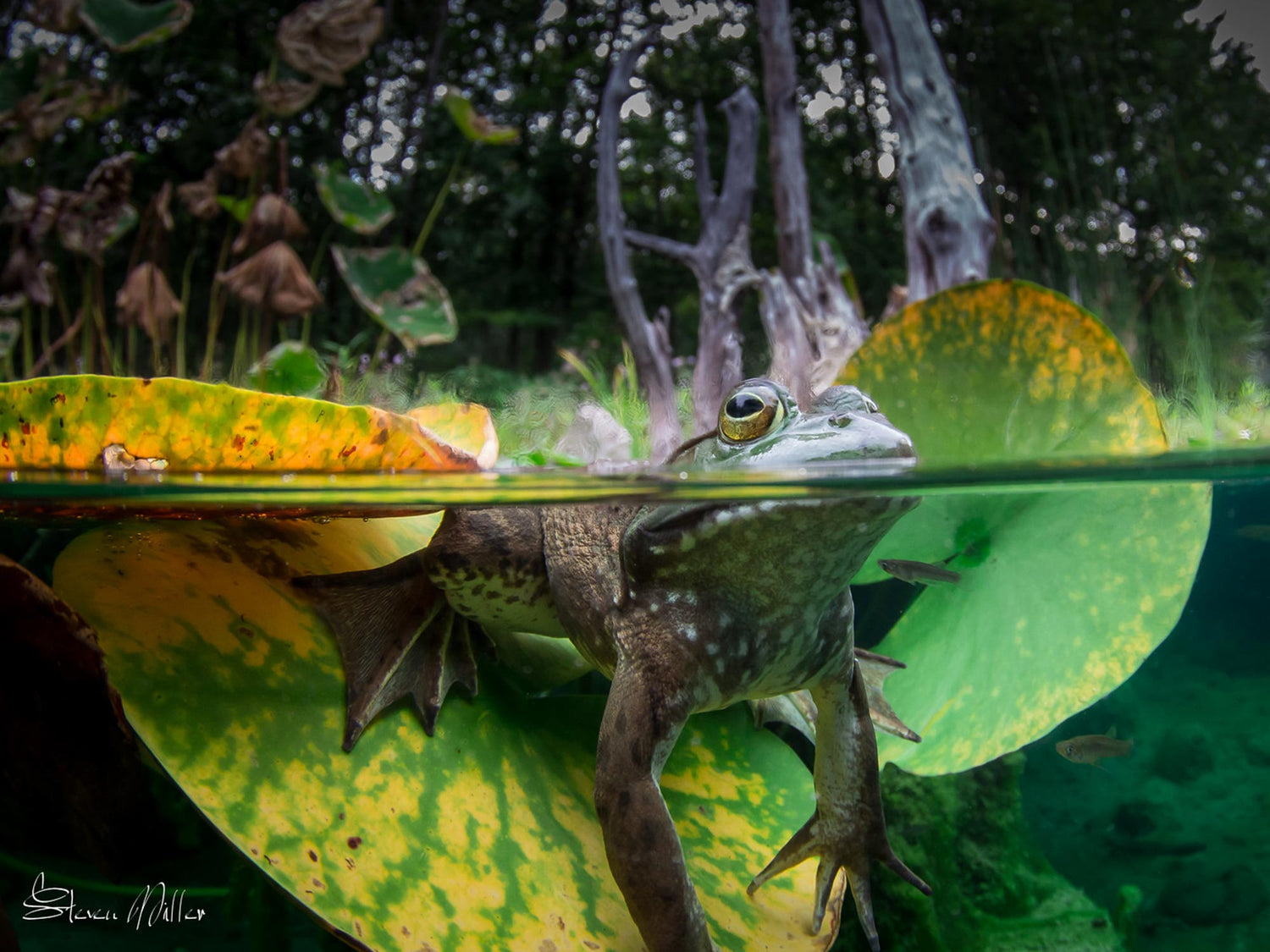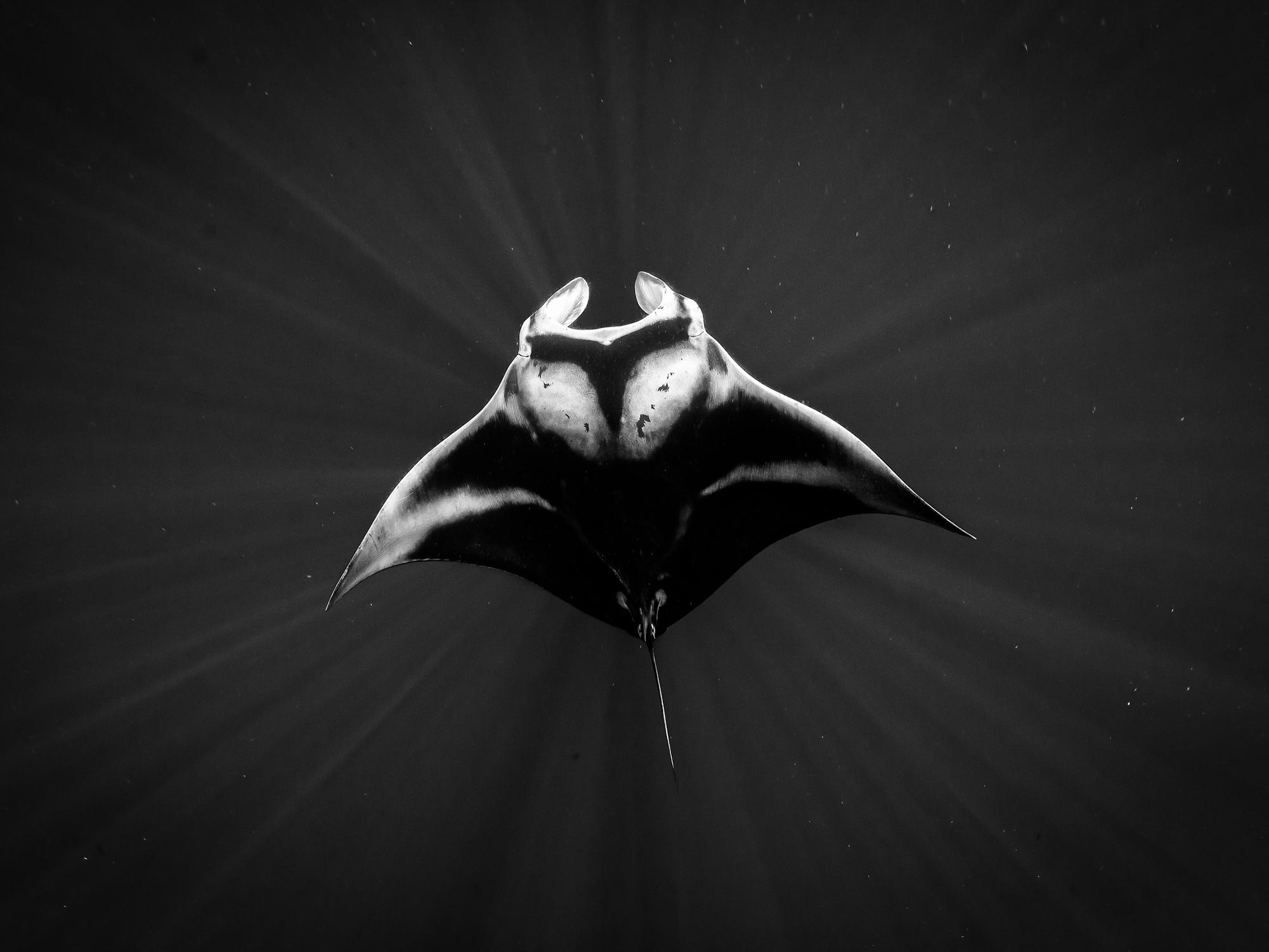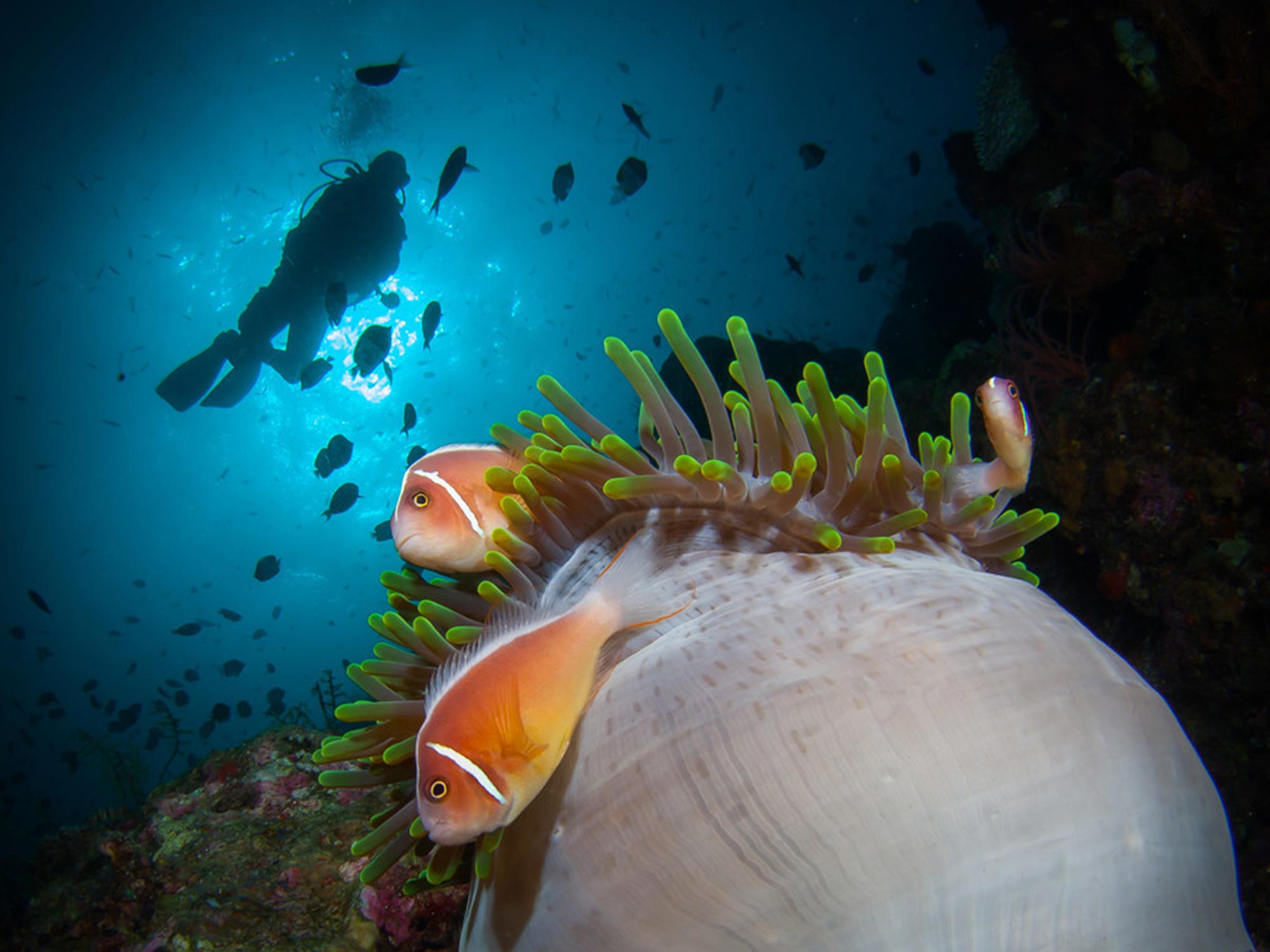There are many types of freshwater. Some of the clearest water in the world is fresh. Cenotes, springs, etc. can be crystal clear. For these bright waters the settings you'd use for a bright tropical reef will work for your camera. However, here we are going to assume that freshwater means darker, and less clear than a tropical reef. Quarries or lakes would be the common example.
Where
Lakes, quarries, rivers, and waters with visibility in the 10' to 30' (3 to 10m) range at any latitude or temperature.

Ice diffuses light, removing shadows and highlights. Today's cameras can shoot at extremely high ISO, allowing us to use fast enough shutter speeds and stopped down lenses in lower visibility. Photo © 2021 Steve Miller
DSLR + Mirrorless
Mode: Manual settings with a consistent camera angle, preferably upward.
ISO: 400 to 1000 depending on depth and ambient light, or the use of strobes.
Aperture: F-5.6 to F-8 to start for the diminished light. If you go deep enough and aren't using strobes, it's fine to open the lens up all the way, particularly with super wide angle lenses where the depth of field is gracious.
Shutter speed: 1/125th second is a good starting point. But, if you are shooting scenics, divers, or slow moving subjects and need more light, you can shoot at 1/60th or 1/30th second.
Lens: Unless you are shooting macro, a super wide lens will allow you to get very close to any subject and still have a wide view. This will make your water appear clearer and your subject will image sharper with more detail.
Point and Shoot
Mode: Program mode for natural light can work well, but don't be afraid to use your exposure compensation down a stop or so if your images seem to bright. With a strobe Manual mode will give you the most control.
ISO: In these darker conditions, ISO is your key to imaging the background. On deeper dives with no flash, don't be afraid of super high ISO numbers, some cameras will handle ISO as high as 10,000.
Aperture: You will probably end up using the most open Aperture your camera and lens allows. With wide lenses this is OK because their depth of field is so large.
Shutter speed: 1/60th to 1/250th second
Lens: 10mm-28mm will be an ideal 35mm equivalent focal length, so for most cameras zoom out to as wide as you can get.

Clear freshwater springs and cenotes have light levels that rival a shallow coral reef. Flash fill will boost your colors and sharpness even at these shallow depths. Photo © 2021 Steve Miller
Technique
These are some of the most difficult images to capture. An extreme upward camera level will make a nice gradient of light in the background, but you won't get the textures or clouds that we see in clearer water. Balancing your light so the exposure is even across the image matters, unless you want your background to go pure black. If you use lights, be subtle and consider having a second light source off-camera, a highlight of any sort will be a bright spot in these images that tend to be monochromatic and lacking contrast.
Strobes
On these dives, your strobes are capable of making the entire background black. If this isn't what you want, bring them out farther and farther away and off axis to the subject until you get the subtle light that you like.

Deeper dives in Freshwater lakes and Quarries have diminishing light levels. Moving your ISO up to accommodate the ambient light levels with a soft flash can mediate the changes. Photo © 2021 Steve Miller
 Ambassador Steve Miller has been a passionate teacher of underwater photography since 1980. In addition to creating aspirational photos as an ambassador, he leads the Ikelite Photo School, conducts equipment testing, contributes content and photography, represents us at dive shows and events, provides one-on-one photo advice to customers, and participates in product research and development. Steve also works as a Guest Experience Manager for the Wakatobi Dive Resort in Indonesia. In his "free" time he busies himself tweaking his very own Backyard Underwater Photo Studio which he's built for testing equipment and techniques. Read more...
Ambassador Steve Miller has been a passionate teacher of underwater photography since 1980. In addition to creating aspirational photos as an ambassador, he leads the Ikelite Photo School, conducts equipment testing, contributes content and photography, represents us at dive shows and events, provides one-on-one photo advice to customers, and participates in product research and development. Steve also works as a Guest Experience Manager for the Wakatobi Dive Resort in Indonesia. In his "free" time he busies himself tweaking his very own Backyard Underwater Photo Studio which he's built for testing equipment and techniques. Read more...
Additional Reading
Building the Next Generation Backyard Underwater Photo Studio
Backyard Natural Swimming Pool Studio Underwater Photos
Canadian Splash: Destination Ontario
Caverns and Cenotes Underwater Camera Settings
Shooting Florida Gators with Shawn Jackson













